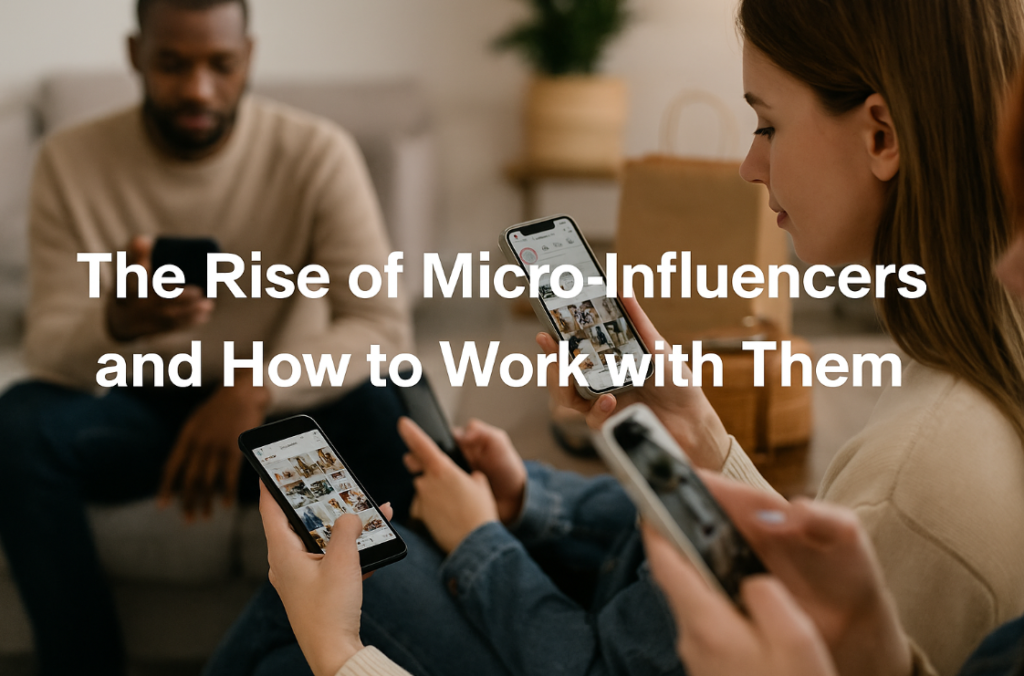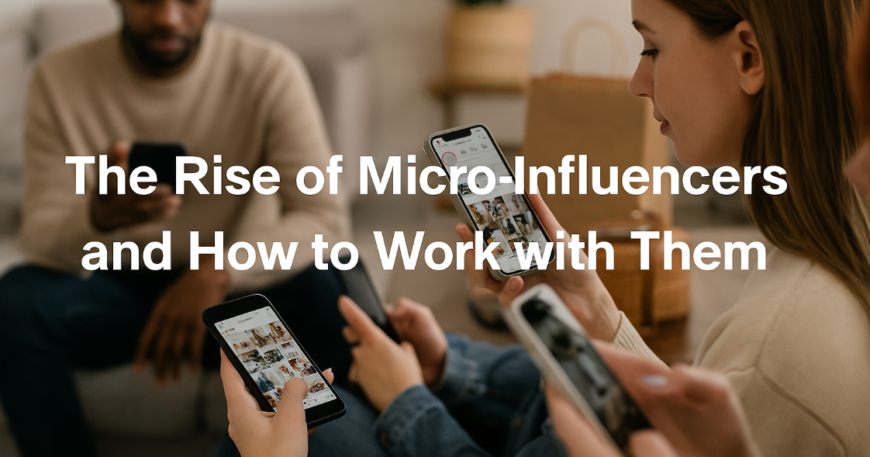
Table of Contents
- Introduction
- The Micro-Influencer Movement
- Why Brands Are Turning to Micro-Influencers
- Social Media Platforms Powering Micro-Influencers
- How to Find the Right Micro-Influencers
- How to Approach and Collaborate with Micro-Influencers
- Measuring ROI of Micro-Influencer Campaigns
- Common Mistakes to Avoid
- The Future of Micro-Influencer Marketing
- Conclusion
- FAQs
Introduction
Ever scroll through your Instagram feed and feel like the influencers you follow actually get you? That’s not a coincidence—it’s the micro-influencer effect in action. Forget the mega-famous celebrities with millions of followers. Brands today are shifting their focus to smaller, more engaged creators who can spark real conversations and influence buying decisions.
The Micro-Influencer Movement
Definition and Follower Count
Micro-influencers typically have between 1,000 to 100,000 followers. They’re not household names, but they often have a loyal, niche audience who genuinely values their opinions.
Comparison with Macro and Celebrity Influencers
Unlike mega-influencers (over 1 million followers), micro-influencers don’t carry the same price tag—and that’s a good thing. Macro-influencers might get you reach, but micro-influencers bring relationships. Their audiences are more tightly knit and tend to trust their recommendations more.
The Appeal of “Real People”
Let’s face it—most of us trust our friends over celebrities when it comes to recommendations. Micro-influencers are like that cool friend who knows what’s good before anyone else does.
Why Brands Are Turning to Micro-Influencers
Higher Engagement Rates
Micro-influencers tend to have higher engagement rates than macro-influencers. Why? Their audiences aren’t just passive followers—they’re active participants.
Cost-Effectiveness
Working with micro-influencers is budget-friendly. You can collaborate with multiple influencers for the price of one macro-influencer, spreading your reach across different segments.
Trust and Authenticity
Micro-influencers are seen as more relatable. Their recommendations come off as genuine, not sponsored fluff.
Niche Targeting
Want to target vegan dog lovers in Austin? There’s probably a micro-influencer for that. Their niche appeal means better-targeted campaigns.
Social Media Platforms Powering Micro-Influencers
The OG of influencer marketing. Still a powerhouse for visual content, reels, and stories.
TikTok
Short-form videos are where micro-influencers shine. It’s raw, real, and incredibly effective.
YouTube
Great for in-depth reviews, tutorials, and long-form storytelling.
LinkedIn for B2B
Yup, even B2B companies are catching on. Micro-influencers on LinkedIn can help build authority and trust in professional circles.
How to Find the Right Micro-Influencers
Define Your Goals and Audience
Know what you want. Brand awareness? Conversions? Engagement? Start with your end goal and work backward.
Use Influencer Discovery Tools
Platforms like Upfluence, Heepsy, and AspireIQ can help you discover influencers based on niche, audience, and location.
Vetting Content Quality and Engagement
Look beyond follower count. Check post quality, consistency, and how often followers engage.
Analyze Their Audience Demographics
Do their followers match your target market? Use analytics tools or request media kits to get the data you need.
How to Approach and Collaborate with Micro-Influencers
Outreach Best Practices
Don’t just slide into DMs with a copy-paste message. Personalize your outreach—mention what you like about their content.
Building Relationships, Not Just Transactions
Think long-term. Offer value, not just money. Build a partnership, not a pitch.
Types of Campaigns That Work
- Product reviews
- Giveaways
- Discount codes
- “A day in the life” videos
- Behind-the-scenes content
Content Guidelines and Creative Freedom
Give direction but don’t micromanage. Let them speak in their own voice—it’s why their followers trust them.
Measuring ROI of Micro-Influencer Campaigns
Key Metrics to Track
- Engagement rate
- Click-through rate
- Follower growth
- Conversions
- Brand mentions
Tools for Measurement
Try platforms like Google Analytics, Bitly (for tracking links), and social media analytics dashboards.
Real-World Case Studies
Brands like Glossier, Daniel Wellington, and HelloFresh have built entire strategies around micro-influencers—and won big.

Common Mistakes to Avoid
Over-Controlled Messaging
Don’t force scripts. It kills authenticity.
Ignoring Micro-Influencer Insights
They know their audience better than you do. Listen to their ideas.
Misalignment in Values or Audience
Make sure the influencer’s values align with your brand. A mismatch can backfire badly.
The Future of Micro-Influencer Marketing
Emerging Trends
- Rise of nano-influencers (<1,000 followers)
- Cross-platform campaigns
- Video-first strategies
Role of AI and Data
AI tools are helping brands identify the best-fit influencers and predict campaign success more accurately.
Long-Term Brand Partnerships
One-off posts are fading. Ongoing ambassadorships build stronger brand recall and loyalty.
Conclusion
Micro-influencers are no longer the underdogs—they’re the new MVPs of digital marketing. Their relatable voices, high engagement, and niche appeal make them perfect partners for brands big and small. If you haven’t tapped into their power yet, now’s the time. Start small, build genuine relationships, and watch your brand loyalty soar.
FAQs
What is the ideal follower count for a micro-influencer?
Typically between 1,000 and 100,000 followers, depending on your niche and campaign goals.
How much do micro-influencers charge?
Rates vary by niche and engagement but can range from $50 to $500 per post, sometimes more.
Can micro-influencer marketing work for B2B brands?
Absolutely. Especially on platforms like LinkedIn, where thought leadership and niche targeting matter.
How do I track the effectiveness of a micro-influencer?
Monitor metrics like engagement rate, website traffic from their posts, discount code redemptions, and overall conversions.
Is it better to work with one micro-influencer or several?
Multiple influencers allow for broader reach and diverse content. But it depends on your strategy and budget.




